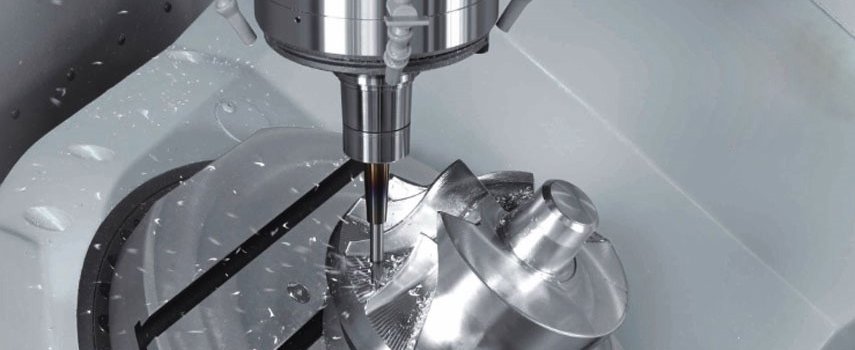Micro CNC machining is a cutting-edge manufacturing process that enables the production of extremely small and precise components. With the growing demand for miniaturization in industries like electronics, medical devices, aerospace, and automotive, micro CNC machining has become an essential technology for achieving unparalleled accuracy and complexity. This post explores what micro CNC machining is, its techniques, applications, benefits, and challenges.
What is Micro CNC Machining?
Micro CNC machining involves the use of computer numerical control (CNC) technology to fabricate miniature components with high precision, typically with tolerances as tight as ±1 micron. It allows manufacturers to machine intricate features, such as micro-holes, channels, or fine contours, on parts that are often smaller than a grain of rice.
The process utilizes scaled-down versions of standard CNC tools, such as miniature end mills, drills, and lathes, combined with advanced machine controls and high-speed spindles to achieve exceptional detail and surface quality.
Techniques in Micro CNC Machining
- Micro Milling
Micro milling uses miniature tools, sometimes as small as 0.1 mm in diameter, to cut complex shapes with precision. High-speed spindles and precise toolpath control ensure that the desired geometries are achieved without deformation or errors.
- Micro Turning
Micro turning is used to produce cylindrical parts and features with diameters as small as 0.01 mm. Specialized lathes and advanced cutting tools are essential for handling such delicate dimensions.
- Wire EDM (Electrical Discharge Machining)
Wire EDM is employed for creating ultra-fine features by using a thin, electrically charged wire to cut materials with incredible accuracy. This non-contact process minimizes stress on the workpiece.
- Laser Micromachining
Lasers are used for cutting, drilling, or engraving micro-scale features on materials. This technique is particularly useful for fragile or non-metallic materials, where traditional cutting tools may cause damage.
- Hybrid Machining
Some advanced micro CNC machines combine traditional cutting methods with non-traditional approaches like laser or EDM to achieve even greater precision and versatility.
Typical materials for Micro CNC Machining
Material selection is a key aspect of micro precision machining, as the characteristics of each material and their applicability to their respective applications vary. In this section, we will discuss different materials suitable for micro precision machining:
Metal
Copper, stainless steel, titanium and other metals are typical micro CNC machined metals. Copper is a common processing material known for its excellent thermal and electrical conductivity. It is a commonly used metal for microfabrication of electronic components such as cooling systems, heat sinks, and printed circuit boards.
Stainless steel has high strength and corrosion resistance, making it suitable for precision microfabrication of medical devices, orthopedic implants, and surgical instruments. In addition, the compatibility and durability of titanium with sterilization processes make it an ideal choice in the healthcare field.
Titanium is a widely used micro precision machining material in the aerospace industry due to its excellent strength to weight ratio, extreme temperature, and corrosion resistance. In addition, due to its biocompatibility, medical device manufacturers use titanium to microfabricate different body prostheses and implants.
Plastic
Micro CNC machining is compatible with various high-performance engineering plastics such as Peek, Teflon, and Ultem. Developers and manufacturers in different industries such as automotive, aerospace, and consumer electronics widely use these plastics due to their unique aesthetics, high temperature resistance, strength, dimensional stability, UV resistance, and weather resistance.
Compound Material
Typical CNC processed composite materials include carbon fiber reinforced polymer (CFRP) and glass fiber reinforced polymer (GFRP). Basalt fiber-reinforced polymer (BFRP) and ceramic matrix composites (CMC). CFRP is a typical microfabrication material known for its lightweight and high strength properties. This advanced engineering material is suitable for micro precision machining of aircraft structural components, racing parts, and sports equipment.

Applications of Micro CNC Machining
Micro CNC machining has a wide range of applications across various industries:
- Medical Devices
– Surgical instruments, micro-needles, stents, and implants.
– Precision machining ensures biocompatibility and accuracy for medical applications.
- Electronics
– Production of connectors, micro-switches, and semiconductors.
– Enables the development of smaller and more powerful consumer electronics.
- Aerospace
– Components for sensors, micro-thrusters, and avionics.
– Precision is critical for ensuring safety and performance in aerospace systems.
- Automotive
– Miniaturized parts for fuel injection systems, sensors, and actuators.
– Micro-machining helps improve fuel efficiency and vehicle performance.
- Watchmaking and Jewelry
– Intricate designs and fine details for luxury watches and jewelry.
– CNC machining ensures consistency and high-quality finishes.
Benefits of Micro CNC Machining
- Extreme Precision
Micro CNC machining delivers unmatched accuracy, enabling the production of parts that meet stringent tolerance requirements.
- Scalability
While designed for miniature components, micro CNC machining can be scaled up to handle small-to-medium production runs without sacrificing quality.
- Material Versatility
Micro machining works with a wide variety of materials, including metals (aluminum, titanium, stainless steel), plastics (PEEK, polycarbonate), ceramics, and composites.
- Complex Geometries
It enables the creation of highly intricate designs and features that are impossible to achieve using conventional machining methods.
- Surface Quality
The process achieves superior surface finishes, often eliminating the need for post-processing steps like polishing or grinding.
- Reduced Waste
Precise material removal minimizes waste, making micro CNC machining a cost-effective and environmentally friendly option.
Challenges in Micro CNC Machining
- Tooling Limitations
Miniature tools are prone to breakage and wear due to their small size and the high cutting forces involved. Proper tool selection and frequent monitoring are critical.
- Thermal Distortion
Even small temperature fluctuations can affect the accuracy of micro-scale parts. Temperature-controlled environments and advanced cooling systems are often required.
- Machine Calibration
Ensuring that machines remain precisely calibrated over long periods can be challenging but is vital for consistent results.
- High Initial Investment
The advanced equipment and tooling required for micro CNC machining can involve significant upfront costs, though the long-term benefits often justify the expense.
Future of Micro CNC Machining
As industries continue to demand smaller, lighter, and more complex products, micro CNC machining is poised for rapid growth. Advancements in machine tool design, cutting-edge materials, and process automation will further enhance its capabilities, enabling even greater precision and efficiency. Integration with technologies like AI, machine learning, and digital twins will also optimize machining processes, reduce downtime, and improve overall productivity.
Conclusion
Micro CNC machining is a game-changing technology that enables the production of high-precision, miniature components critical to a variety of industries. By employing innovative techniques, advanced tools, and precise controls, manufacturers can meet the challenges of miniaturization while maintaining exceptional quality. As the demand for smaller, more intricate parts continues to grow, micro CNC machining will remain at the forefront of precision manufacturing.
Whether you’re creating components for cutting-edge medical devices or intricate electronics, micro CNC machining offers the precision, versatility, and reliability required to meet modern manufacturing needs.



